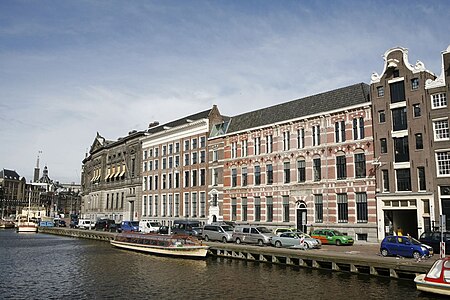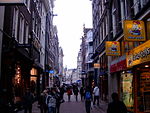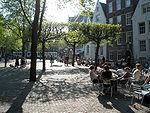Bibliotheca Rosenthaliana

The Bibliotheca Rosenthaliana is the Jewish cultural and historical collection of the University of Amsterdam Special Collections. The foundation of the collection is the personal library of Leeser Rosenthal, whose heirs presented the collection as a gift to the city of Amsterdam in 1880. In 1877 the city library had become the University Library, so the Bibliotheca Rosenthaliana was essentially given to the University. The Bibliotheca Rosenthaliana has since expanded to become the largest collection of its kind in Continental Europe, featuring manuscripts, early printed books, broadsides, ephemera, archives, prints, drawings, newspapers, magazines, journals, and reference books.
Excerpt from the Wikipedia article Bibliotheca Rosenthaliana (License: CC BY-SA 3.0, Authors, Images).Bibliotheca Rosenthaliana
Singel, Amsterdam Centrum
Geographical coordinates (GPS) Address Phone number Website Nearby Places Show on map
Geographical coordinates (GPS)
| Latitude | Longitude |
|---|---|
| N 52.368333 ° | E 4.890278 ° |
Address
Universiteit van Amsterdam
Singel
1012 XS Amsterdam, Centrum
North Holland, Netherlands
Open on Google Maps











